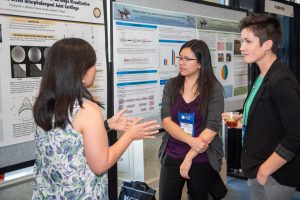 Meet your future colleagues and interact with students from UC Davis and Western University as they explain, discuss, and answer questions about their research. The posters will be on display in the Vet Expo throughout the conference. Students will be available to discuss their theses during the lunch breaks on Saturday, June 10 and Sunday, June 11. They will also be presenting in the Vet Expo during the afternoon break.
Meet your future colleagues and interact with students from UC Davis and Western University as they explain, discuss, and answer questions about their research. The posters will be on display in the Vet Expo throughout the conference. Students will be available to discuss their theses during the lunch breaks on Saturday, June 10 and Sunday, June 11. They will also be presenting in the Vet Expo during the afternoon break.
Saturday, June 10, 2023
Sunday, June 11, 2023
WesternU Student Poster Presentations
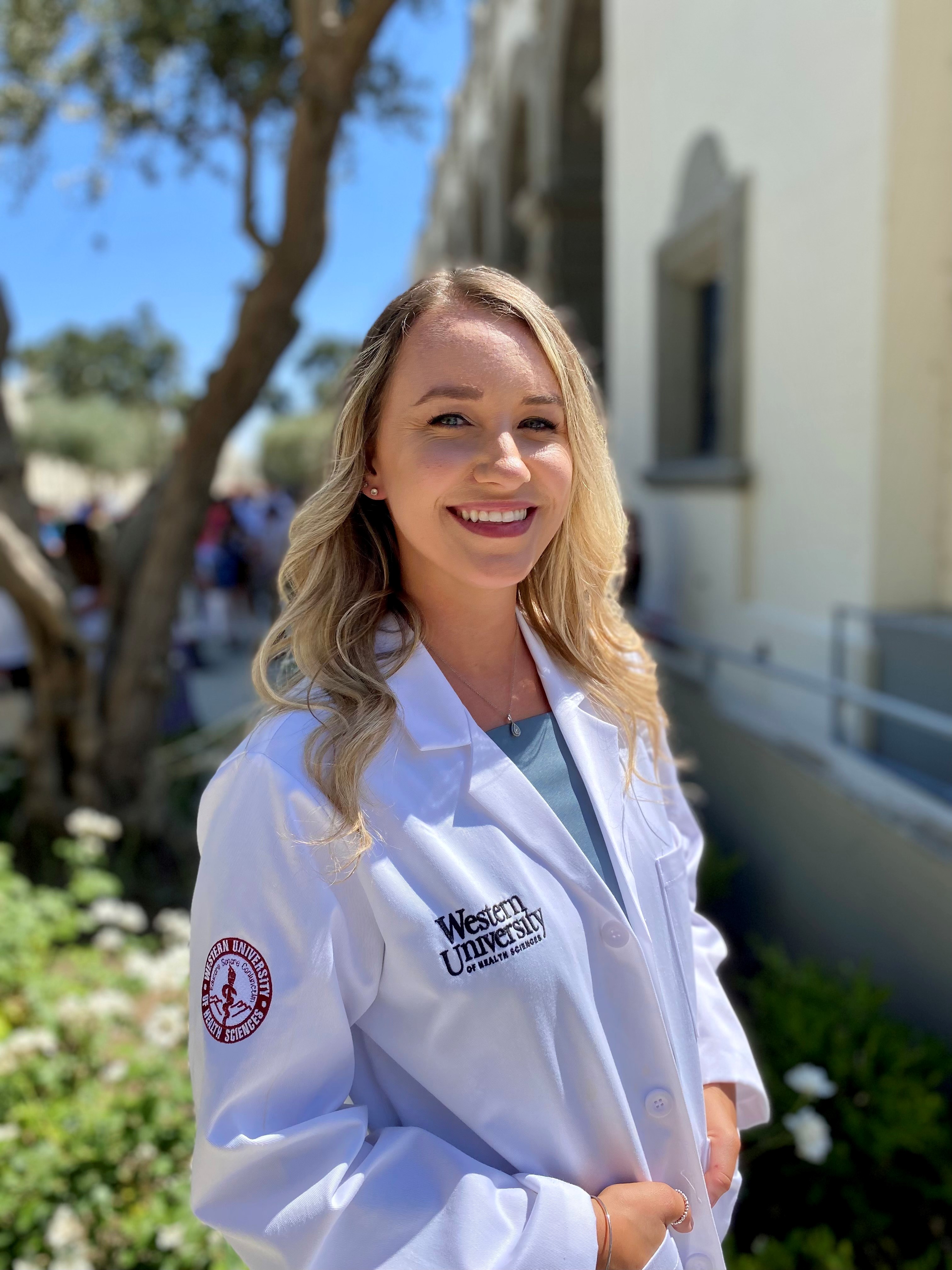 Aleksandra Antoszewski, Class of 2025
Aleksandra Antoszewski, Class of 2025
My name is Aleksandra Antoszewski and I am a veterinary candidate at Western University of Health Sciences, class of 2025. I received my BS degree in Animal Health Science from Cal Poly Pomona and worked as an RVT in the surgery department. My career goals include pursuing a small animal surgical residency to become a board‐certified surgeon.
Influence of Tibial Osteotomies on Rotational Instability of the Canine Stifle
Our objective was to first determine the influence of tibial osteotomies, both tibial plateau leveling osteotomy (TPLO) and tibial tuberosity advancement (TTA), on internal rotational instability of cranial cruciate ligament deficiency in canine stifles, and then to compare these influences with the lateral fabellar suture (LFS) surgery. We used a pair of hind limbs and randomized which leg would get either the TPLO or TTA surgery and then performed the LFS surgery on both limbs. We assessed clinically and radiographically before and after each modification. After making the final assessment measurements, we compared limbs between each group.
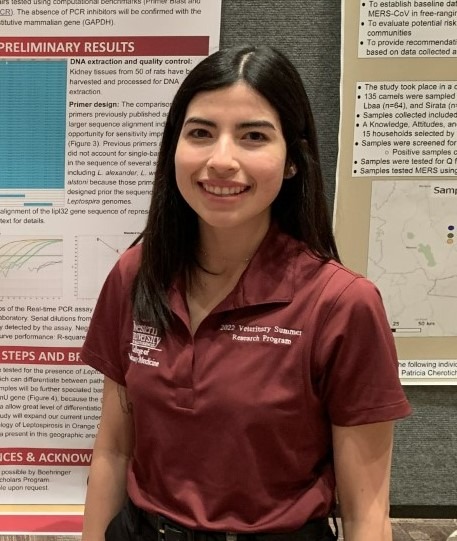 Emely Castelo, Class of 2024
Emely Castelo, Class of 2024
My name is Emely Castelo and I am a veterinary candidate at Western University of Health Sciences, class of 2024. I am from Phoenix, Arizona and graduated with a BS in veterinary science from the University of Arizona. My interests are in comparative anatomic pathology and zoonotic diseases.
Investigating the Prevalence of Leptospira Spp. in an Urban Rat Population in Orange County, California
Leptospirosis is a major zoonotic disease worldwide, with over one million novel cases and around 60,000 deaths annually. Factors like recurrent flooding, poor levels of sanitation, and high populations of rats increase the risk of human infection, especially in endemic areas. Rats from the genus Rattus rattus and Rattus norvegicus are well-documented reservoirs for infection in urban areas. In the reservoir host, Leptospira spp. is concentrated in large amounts in the kidneys and spread through the urine. Pathogenic Leptospira spp. can survive in water or soil for months afterwards, causing infection when entering the body through the skin or mucous membranes. The purpose of this study was to determine if pathogenic Leptospira spp. is present in urban rats in Orange County, California.
 Dylan Johnston, Class of 2024
Dylan Johnston, Class of 2024
My name is Dylan Johnston and I am a veterinary candidate at Western University of Health Sciences, class of 2024. I graduated from UC Davis with a BS in Animal Science in 2020. Currently, my aspirations consist of pursuing a pathology residency after veterinary school to become a veterinary pathologist. My research interests include studying infectious and zoonotic diseases.
Histopathologic Findings Associated with Natural Infection with Highly Pathogenic Avian Influenza Virus A (H5N1) in Three Juvenile Raccoons (Procyon lotor)
Highly Pathogenic Avian Influenza (HPAI) H5N1 is a viral disease with a broad host range encompassing multiple species of birds and mammals, including humans. My presentation will discuss the histopathologic and immunohistochemical findings associated with HPAI H5N1 in three juvenile raccoons submitted by clinicians. Each raccoon was found in regions with known HPAI-infected avian species during an ongoing outbreak during the summer of 2022 in Washington. My presentation will discuss the histopathologic and immunohistochemical changes associated with HPAI H5N1 infection in these three raccoons and how these findings can be applied in clinical practice. Many cases of HPAI H5N1 occur in avian species and pose an infection risk to other mammalian species. The objective of this study is to document pathologic changes associated with natural infection with HPAI H5N1 in raccoons to understand the virally induced changes in a novel species.
 Anastassiya Kantserova, Class of 2025
Anastassiya Kantserova, Class of 2025
My name is Anastassiya Kantserova, and I am a veterinary candidate at Western University of Health Sciences, class of 2025. I graduated from Academy of Veterinary Medicine in Saint-Petersburg, Russia in 2014. My passion is small animal surgery and I am planning to do an internship and residency programs on that matter. I completed the WesternU 2022 Veterinary Summer Research Program and presented my work on the National Veterinary Scholars Symposium.
Canine Urine Mycobiome After Consuming a Plant-Based Diet for a Year
We studied a cohort of 15 dogs for a year following a transition from a meat-based diet to a plant-based diet. Urine samples collected through cystocentesis at baseline and endpoint were analyzed for fungal community content via ITS2 amplification and next-generation sequencing.
Mycobiome in urine samples of dogs on plant-based diet displayed a great increase of Aspergillaceae family and a significant decrease of Cladosporiaceae family. Beta diversity plot exhibited a larger variability among the plant-based samples with comparison to meat-based. The taxonomy abundance heat map shows the abundance of Cladosporium species on a meat-based diet. In 12 months, the same dog showed a shift to Penicillium species that produces metabolites which possess antimicrobial and antiviral properties. Cladosporium spp. are known as significant allergens; therefore, results suggest that transferring from a meat-based to a plant-based diet may be clinically advantageous and can be used as a preventative approach to urinary tract health in dogs.
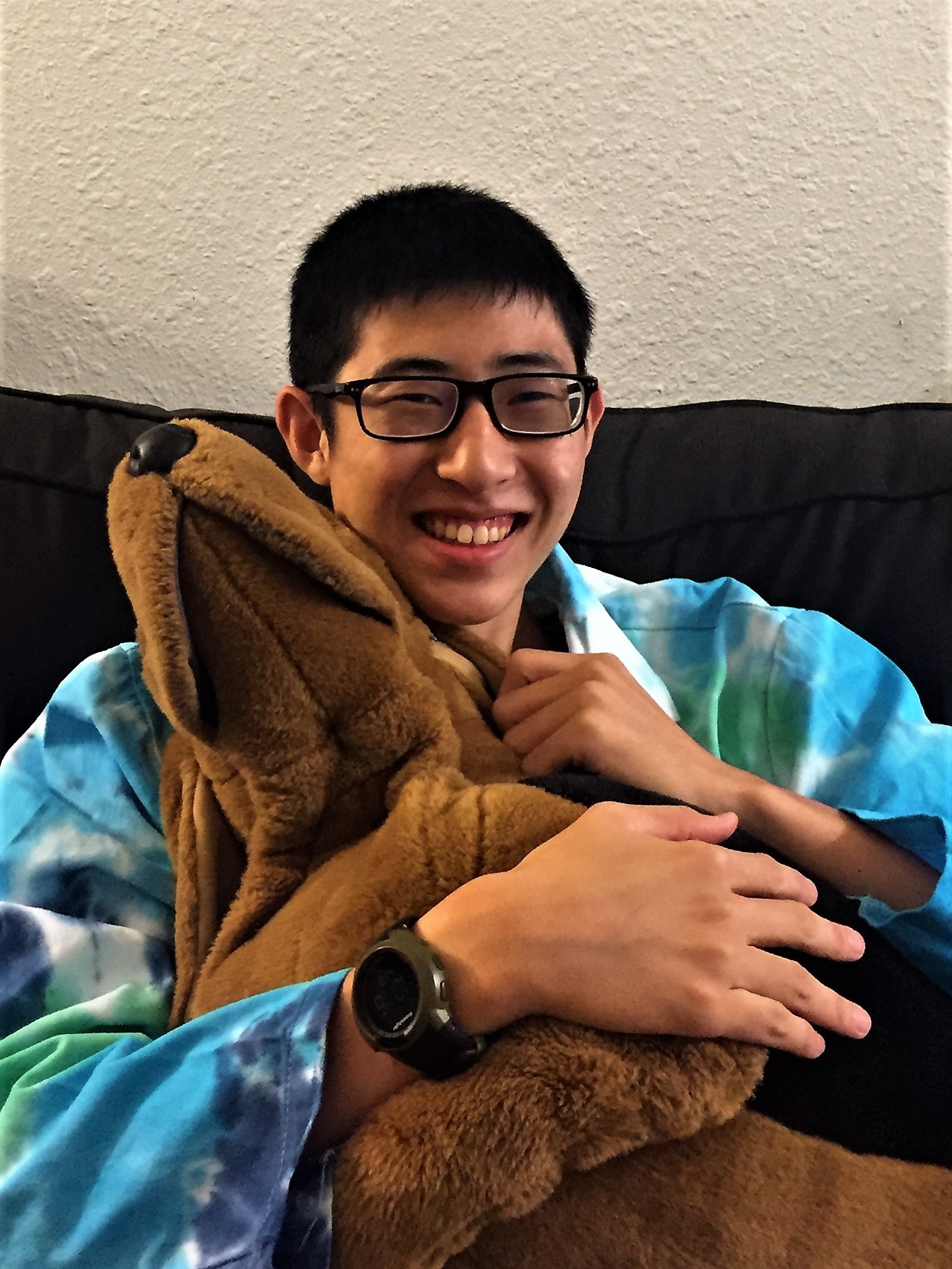 Austin Kyan, Class of 2024
Austin Kyan, Class of 2024
Austin Kyan is a 2024 veterinary student at Western University of Health Sciences. His main interest is internal medicine. Austin hopes to specialize in cardiology and practice on as many diverse species as he can in the future. He enjoys playing the cello in multiple orchestras and professional gigs during his free time.
DMH1 attenuates tumor growth of chemo-resistant prostate cancer in the mouse xenograft
Chemo-resistance is a major problem in patients with prostate cancer (PCa). Docetaxel (DTX) is the therapeutic choice for metastatic PCa patients, but chemo-resistance usually develops within the year. Studies have shown that expression of BMP type 1 receptor (BMPRI) subtype, Activin-like kinase-2 (ALK2), was significantly high in chemo-resistant PCa cells but low in chemo-sensitive PCa cells. In addition, phospho-Smad1/5/8 proteins, the intracellular effectors of BMP signaling, were elevated in chemo-resistant PCa cells compared to chemo-sensitive PCa cells. This suggests that BMP signaling up regulation is responsible for chemo-resistance, and BMP inhibitor DMH1 may overcome the PCa chemo-resistance. The objective of this study is to define the roles of BMP signaling in PCa cell chemo-resistance and determine if BMP signaling inhibitor DMH1 can re-sensitize resistant PCa cells to DTX.
UC Davis Student Poster Presentations
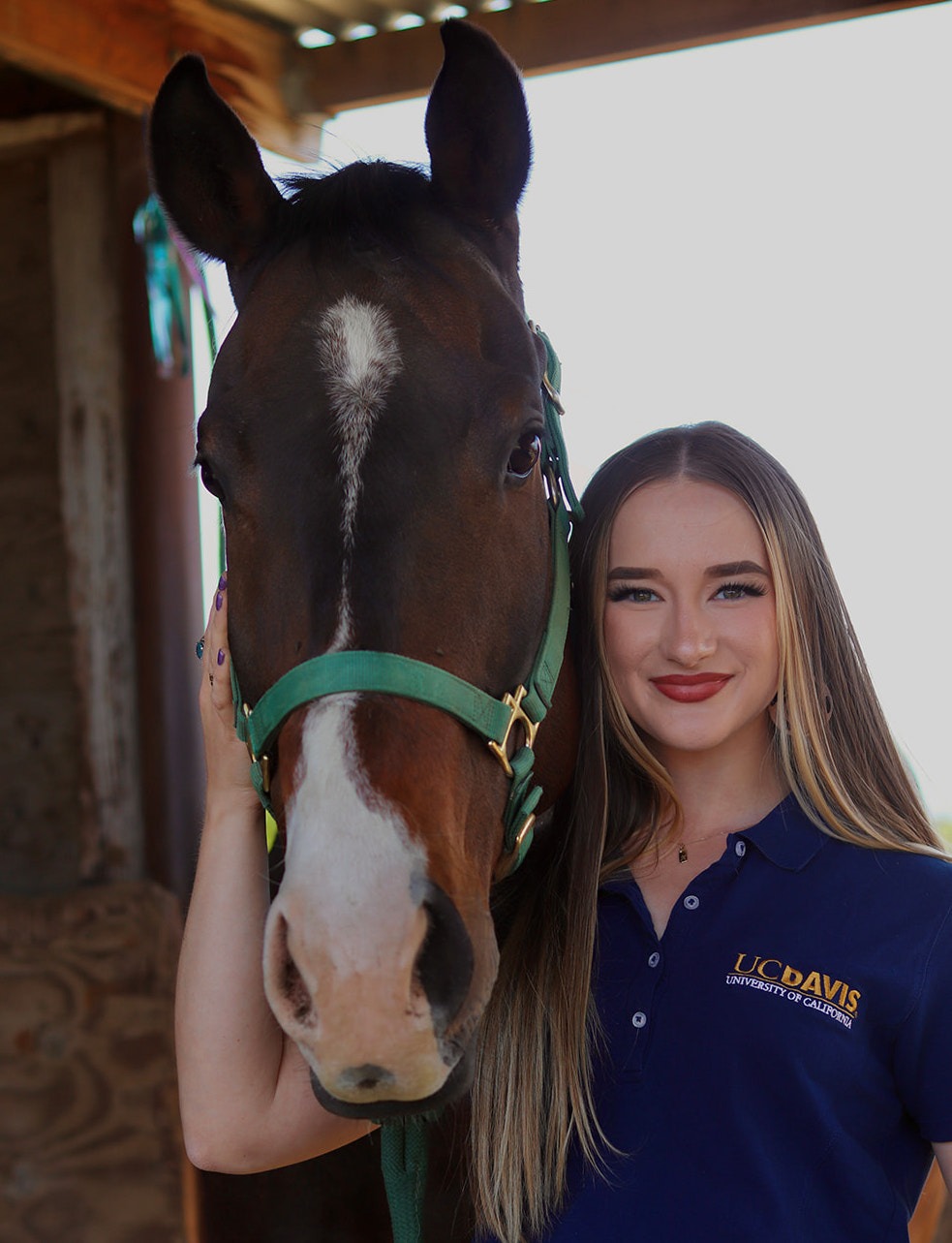 Meghan Poth, Class of 2025
Meghan Poth, Class of 2025
My name is Meghan “Meg” Poth, and I am a veterinary candidate at UC Davis School of Veterinary Medicine, class of 2025. I graduated from Dartmouth College in Hanover, New Hampshire. I intend to pursue the large animal track at UC Davis and find my academic interests particularly piqued by the study of analgesic pharmacokinetics in the equine.
A Tale of Two Metabolites: An Analysis of the Pharmacokinetics of Morphine When Administered Orally
Given the limited analgesic options to relieve equine pain, there exists a need to expand treatment options. Morphine metabolizes into the metabolites morphine-6-glucuronide (M6G) and morphine-3-glucuronide (M3G). Prior studies have linked M3G to adverse effects of morphine, including neuroexcitation, and M6G to its beneficial analgesic effects. It has also been shown in other species that the route of administration of morphine impacts its metabolism to M6G. This finding lends itself to this study, an exploration of an innovative route of administration for morphine in horses—oral—to determine if this method will yield a greater conversion to M6G compared with IV administration, while minimizing morphine’s adverse effects.
